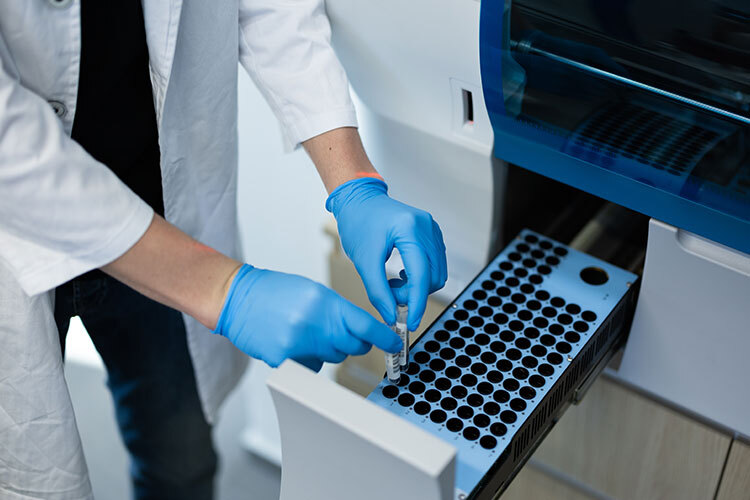Hydroxyapatite is a material that is familiar to dentists, orthopedists, and maxillofacial surgeons because they use it every day for filling, support, or bone substitute.
It’s a calcium phosphate mineral that is found naturally in the bones of humans and animals, which is why it’s considered a very valuable material for medicine, as the body assimilates it without any problems.
According to Enrique Guerrero Beltrán, a researcher at Tec de Monterrey’s School of Medicine and Health Sciences, hydroxyapatite also possesses properties at a nanoparticle scale that enables it to be used as a vehicle for delivering vaccines.
This can be done by emulating the natural communication process between cells in the body. The metaphor that the researcher uses to illustrate this process is that different drugs can be sent in small boats that protect material so that it reaches a particular organ without spilling on the way.
“Our initial idea is to create little boats of nanomaterials that are going to ferry things from one side to the other, something that arrives at a specific site and doesn’t degrade on its journey from the mouth or the blood,” says Guerrero.
What is hydroxyapatite?
Hydroxyapatite nanoparticles are one of the materials that could serve as a vehicle for proteins, peptides, or RNA. Although this has been studied since the start of the century, no one had done the work of compiling these studies carried out in the physical-chemical, biological, and biomedical areas.
Sofía Lara Ochoa, who has recently graduated from Tec de Monterrey with a bachelor’s degree in Chemical Sciences and Nanotechnology Engineering, did this research.
According to Wendy Ortega, a researcher at the School of Engineering and Science, given the pandemic restrictions to use laboratories, to graduate Sofía had to devise an exhaustive investigation online. More than 115 documents on hydroxyapatite nanoparticles were analyzed to examine the feasibility of using these particles as nanovaccines in various pathologies.
Under the supervision of professors Ortega and Guerrero, the young researcher published the article Hydroxyapatite nanoparticles in drug administration: physico-chemistry and applications , a document that analyzes the behavior of the nanomaterial to transport proteins, peptides, drugs, and even genetic material, as well as the interaction it has with other cells.

Pros and cons of hydroxyapatite
Lara Ochoa explains that the slightest change to the structure of hydroxyapatite completely changes its properties, which could lead to negative consequences for the body.
“The fact that [hydroxyapatite] works with a certain biomolecule doesn’t mean that it’s going to work with another medicine. What’s important about this paper is that this material is very promising, but much more needs to be done in terms of its connection with physicochemical properties and the effects it may have at a biological level,” says Lara Ochoa, who is now studying for a graduate degree in Chicago.
To the young researcher’s surprise, the paper has been “astonishingly” successful. A year and a half after publication, it has been cited 31 times and is ranked in the top 8 percent out of 3,600 published papers.


















